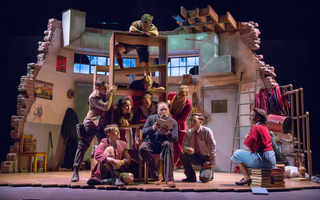Romeo and Juliet was Shakespeare’s second tragedy and was most likely written between 1594 and 1596.
Romeo and Juliet is arguably one of Shakespeare’s best-loved plays, spawning four centuries of spin-offs, including Sergei Prokofiev’s beautiful classical music, countless sculptures and paintings, at least 24 operas, a number of musicals including West Side Story, pop songs and film versions.
While there is no proof that the story is in fact true, in the thirteenth century there were certainly two feuding Italian families. The Montecchi of Verona and the Capuleti of Cremona were locked in a political struggle. These two families are referred to in Dante’s Purgatorio, Canto VI. It is not known if they had children named Romeo and Juliet.
Romeo and Juliet borrows from a tradition of tragic love stories dating back to antiquity. One of these is Pyramus and Thisbe, from Ovid's Metamorphoses, which contains parallels to Shakespeare's story. A sleeping potion to avoid unwanted marriage appeared in such stories in 4th Century AD, added by Greek novelist Xenophon. Italian writer Masuccio of Salerno added the idea of the lovers being star-crossed in 1476 and another brilliant Italian author, Luigi da Porto, set this scene in Verona and named the two feuding families (Montecchi and Capuleti) in 1530. As you can see, this story of two young, star-crossed, Italian, lovers had a huge journey before it landed in the hands of Shakespeare. Dramatists in Shakespeare’s time were incredible bower-birds: borrowing and even outright stealing from other sources. Shakespeare stole plots, dialogue, character names and titles. But this was common: to Elizabethan playwrights, plots and characters were public property. There were no copyright laws at the time and there was only a loose sense of intellectual property.







